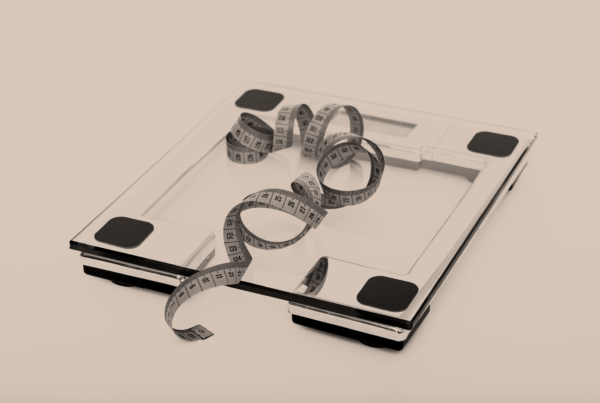Fruits, vegetables, plant-based proteins and whole grains are full of fiber, essential to adequate nutrition. Millions of Instagram accounts feature gorgeous smoothie bowls, salads, and sweet potato toasts to inspire us to include them daily. But at what point is enough enough?
Fiber: Are You Getting Too Much?
How Much Is Enough?
The importance of fiber cannot be understated. It has two crucial roles in your body, both of which, if left unmanaged, can lead to chronic disease later in life:
1) Poop. It provides your stool with enough bulk for it to move efficiently through your system. If you’re eating enough fiber and going to the bathroom about once a day, your body is able to “detox” itself and reduce risk of diverticular disease, inflammatory bowel diseases, and gastrointestinal cancers.
2) Cholesterol. It binds with excess cholesterol before the cholesterol has the chance to circulate back out into the blood where, if unused, it can end up on the walls of your blood vessels and form dangerous plaque over time. When fiber binds with cholesterol, it carries it out of the body in – you guessed it – your stool.
The general recommendation for fiber to do its job is 25-30 grams per day. On average, if you’re consuming about 5 servings of fruits and veggies a day and 3-4 servings whole grains, you’re meeting that recommendation. One way to check is to use a meal tracking app like MyFitnessPal. A registered dietitian can also help you evaluate your diet and determine your fiber intake.
You May Also Like: Salad Remixes To Stay Fresh
What If I Eat More Than That?
In a health-conscious population, it’s not uncommon for fiber intake to be higher— sometimes upwards of 50-60 grams. But is that a bad thing? Not necessarily.
One possibility being studied in research is whether high amounts of fiber will bind with important minerals such as calcium and zinc, and pull them out of the body without being able to be properly digested and absorbed. Avoid this by staying closer to the daily recommendation, and aiming for small frequent portions of fiber throughout the day as opposed to larger portions in one sitting.
The other, more likely side effect of getting too much fiber is going to be gastrointestinal symptoms: bloating, gas, discomfort, and irregular bowel movements. These can often be mistaken for signs of IBS or food intolerance, and it’s important to first rule out whether your fiber intake can be adjusted to manage your symptoms before taking the next steps of talking to a healthcare provider.
That being said, if your fiber intake is high and your body tolerates it well, there is nothing to worry about!
 Fiber and Your GI Tract: Constipation
Fiber and Your GI Tract: Constipation
Too much fiber can result in either constipation or the opposite. The most likely reason for fiber to cause constipation is water intake: without adequate hydration, fiber can be less mobile in your GI system and result in a slower-moving mass that takes much longer to eliminate. This can be super-uncomfortable!
Increase your water intake to about 8 cups (64 ounces) a day and monitor any changes in bowel movements. If over the span of a week you don’t see marked improvement, it’s probably time to talk to your doctor.
Fiber and Your GI Tract: The Opposite of Constipation
Gas, bloating, and frequent bowel movements are the more likely side effect of too much fiber. Here are two main reasons for this:
1) You are eating too much in one sitting. Keep in mind that a serving of raw veggies is 1 cup, or about what fits in one full hand. A serving of leafy greens is 2 cups, or what can fit into 2 cupped hands. A serving of cooked veggies is a half cup, or what would fit on just your palm. If you’re polishing off an entire pint of berries, a whole cucumber, or a piled plate of asparagus and have some of the symptoms above — consider reducing the portion sizes of your fruits and veggies at each meal. Your body is better suited to digest having 1-2 servings at a time every few hours as opposed to trying to get your 5 all in at dinner!
2) You are introducing fiber that your gut bacteria doesn’t know how to digest yet. Your gut bacteria have been cultivated over time to digest the foods that you eat on a regular basis. When you add in a new fruit, veggie, or whole grain that you eat less frequently, it can take time to teach your gut bacteria how to digest it — and in the meantime, you might experience some discomfort! Add new sources of fiber in small amounts (i.e. ¼ cup at a time, or just a small handful) and try to include it multiple times a week.
The Takeaway:
– Use a meal tracking app or meet with a registered dietitian to calculate what your fiber intake is, compared to the recommended 25-30 grams daily.
– Get adequate hydration (8 cups daily) to help the body digest and eliminate fiber efficiently.
– Stick to portion sizes; talk to a registered dietitian if you need some practice with this!
– Introduce new fruits, veggies, and whole grains in small portions (about ¼ cup) more frequently throughout the week and increase as gas, bloating, and bowel symptoms dissipate.
– If following the above tips do not resolve your GI symptoms, it is time to talk to a primary care physician or registered dietitian.







